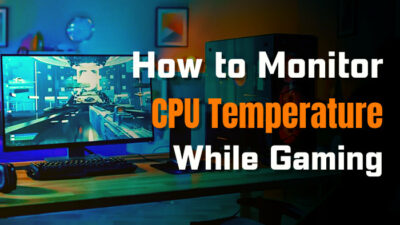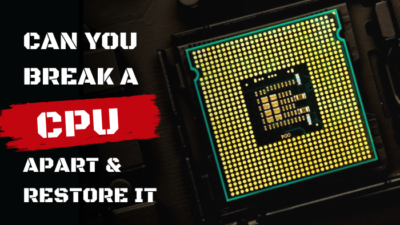Riding a bicycle can help you reach your destination faster than walking. What if you add a motor to your cycle? The time will be much lower. Similarly, having an extra monitor can boost your productivity & helps with multitasking.
But setting up a dual-monitor is not always Plug & Play and needs some requirements.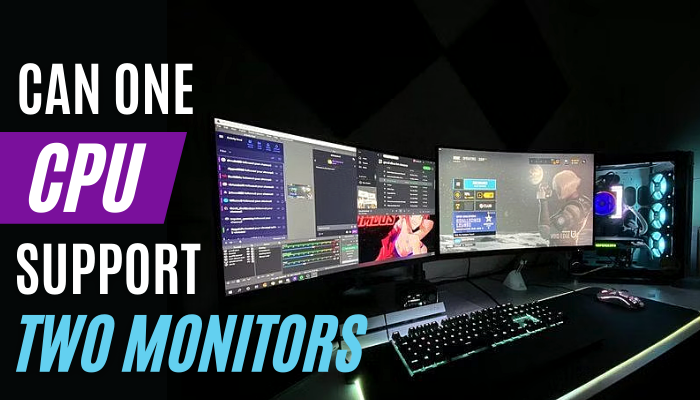
In this article, I will explain the possibility & setup of a double monitor in one CPU. Let’s dive in.
Why Use Dual-Monitor in a Single CPU?
FYI, a PC or laptop is also called the CPU as a whole. So don’t get confused between CPU & processor in this article.
A dual-monitor setup is a process, where it is possible to extend or mirror the main screen to a second monitor. But why do you require a secondary monitor with the same PC? Well, it can help with your gaming, coding, streaming, or working case.
Here are the reasons why a dual monitor can benefit you:
- Gaming: With the extended screen, gamers can reduce their hassle by having a dedicated map or web browser on the second screen. This helps to avoid minimizing games frequently. Besides that, games like flight simulators, racing, or FIFA can give you a unique experience with the extended display.
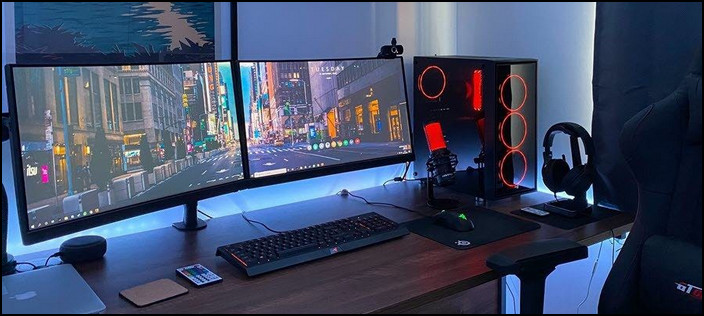
- Coding: Most often, coders need to code long lines. With the help of a duo monitor, it helps to track & edit the codes easily.
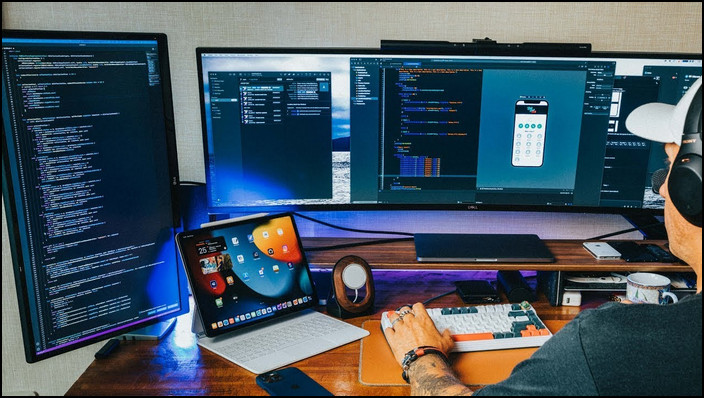
- Streaming: You will frequently see streamers use at least dual monitors. But why? Because with the primary monitor, they can stream & with the other monitor, they control the stream or interact with the chat.
- Working: The second monitor can help you with official video meetings or calls, while you can continue your workflow on your main display. Besides that, a wider Excel sheet or design can also benefit from the dual monitor setup.
With these advantages, it’s difficult to return to a single monitor setup. But is it always possible to connect two monitors to a single CPU? Continue reading to know more.
Can You Attach Two Monitors to One PC?
Most modern PCs have the facility to link up dual monitors. So, YES, it is possible to add two displays to one PC. If you have a second monitor available & both your monitor and PC have connectivity ports available like DP, VGA, and HDMI, it’s attainable to set up two monitors in one PC.
Besides the ports, the GPU also requires supporting the extra monitor. But before that, identifying the ports is vital. As you may require to buy an extra cable or converter to connect the second monitor. So picking the right cable will be hard without determining the ports.
Talking about ports, there are usually four types of ports available: HDMI, DisplayPort, DVI, and VGA.
Here are the ports need to check out which is available for you:
- HDMI: HDMI port transfers both video & audio & can display up to 1920×1080 resolution.
- DisplayPort: It was designed for video ports to make a better version of old VGA & DVI. This port supports 240FPS at 1920×1080 resolution & 144FPS at 3840×2160 resolution.
- DVI: Digital Visual Interface’s video capability can sometimes surpass HDMI. However, it lacks audio support & use less frequently.
- VGA: Older gen computers were populated with the blue VGA port. As it’s a legacy port, it can still be found on laptops & some motherboards. Like DVI, this port is also unable to transfer audio & the latest resolution support is 1920×1080.
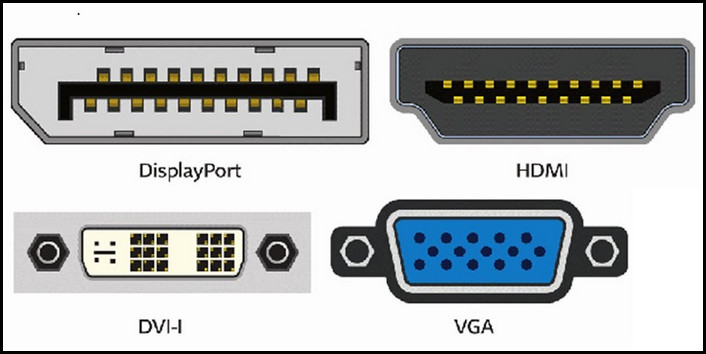
Now, your GPU should have more than one port to connect additional displays. You will require to buy a converter, if the graphics card’s ports don’t match with the monitor’s port.
However, if the graphics card has only one port, you have to use the motherboard’s port. But if your processor lacks an iGPU, then it will be worthless, as it will not function.
So, if you’re ready to attach two monitors, read along.
How to Assemble Dual-Monitor in a Single Computer
Setting up two monitors is not always easy. You have to match the ports & cables with proper desk space for the double monitors.
A great idea to reduce desk space is using monitor arm. With this, you have the agility to formation your monitor according to your need. But it depends on whether you are using a desktop or a laptop. Let’s read ahead to know more about this.
Desktop
A single monitor is not enough nowadays. For multitasking, streaming, coding, and comparing results, a dual monitor setup will give relief.
One monitor port requires an individual video output. So for a dual monitor setup, we need two individual ports. After connecting the monitors with the GPU’s video ports, Windows will automatically detect the second monitor & let you use it.
Here are the steps to connect monitors to a PC:
- Place the two monitors adjacent near your casing on a flat table or mount with a monitor arm.
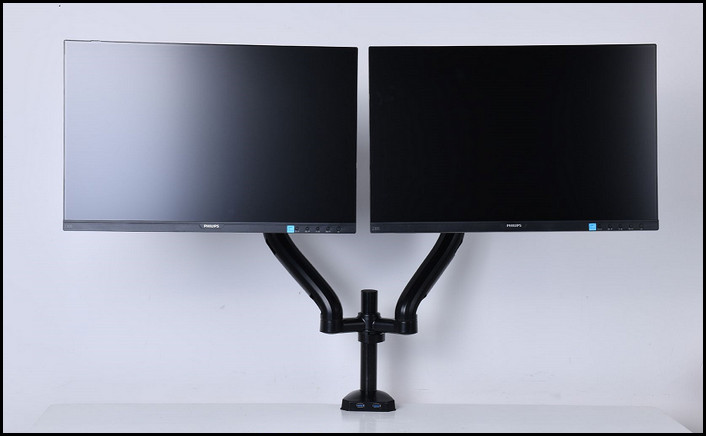
- Connect both monitors with the proper connector cable to the GPU’s video ports.
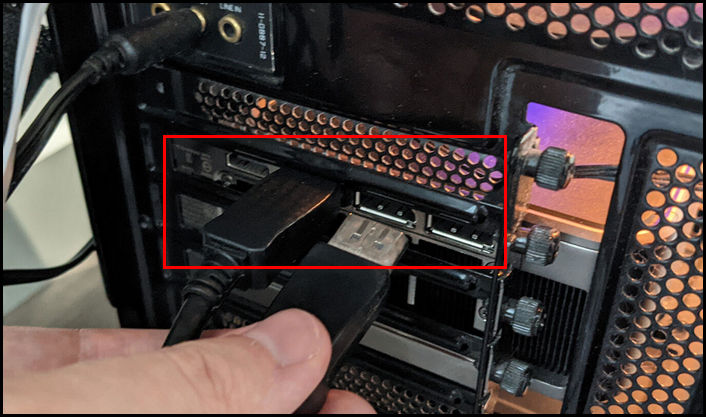
- Ensure the cables plug-in tightly & in the right port (like HDMI to HDMI or DP to DP).
- Use a converter if the ports are mismatched (like DVI to HDMI or VGA to HDMI).
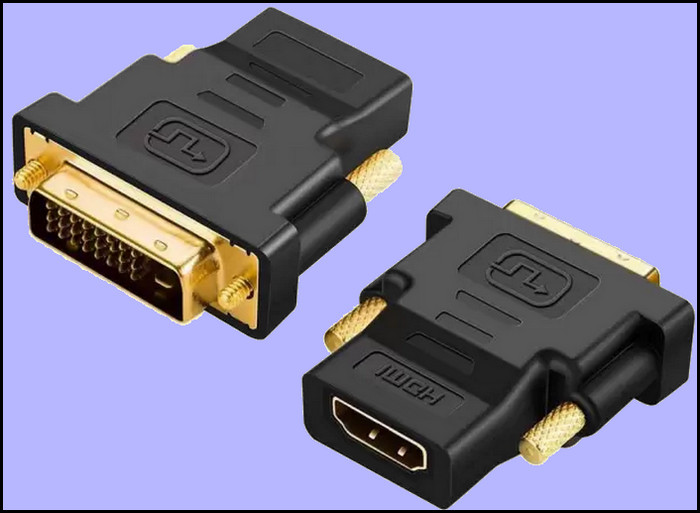
- Power on both monitor & PC.
After the boot, Windows should automatically detect the second monitor. But you may require to configure some appropriate monitor settings. Otherwise, your game can launch on the wrong monitor.
Here are the steps to configure display settings on Windows:
- Right-click on the blank space on the desktop & choose Display settings.
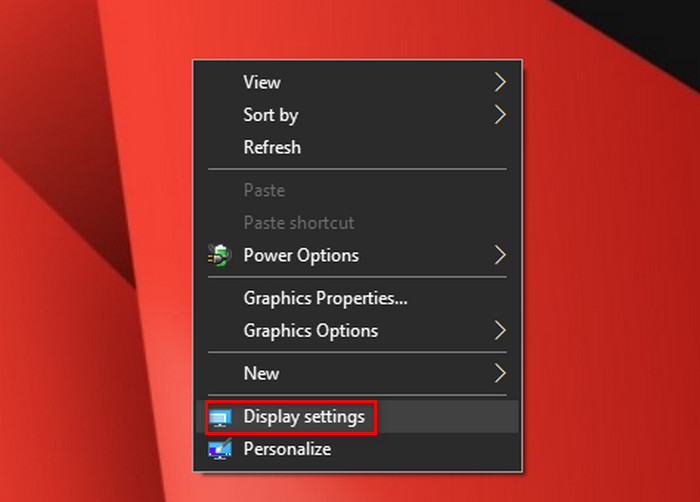
- Select Extend these displays from Multiple displays drop-down & select Keep changes.
![extend-these-displays]](https://10scopes.com/wp-content/uploads/2023/02/extend-these-displays.jpg)
- Pick the main computer from the Rearrange your displays. (the left monitor is considered as the main).
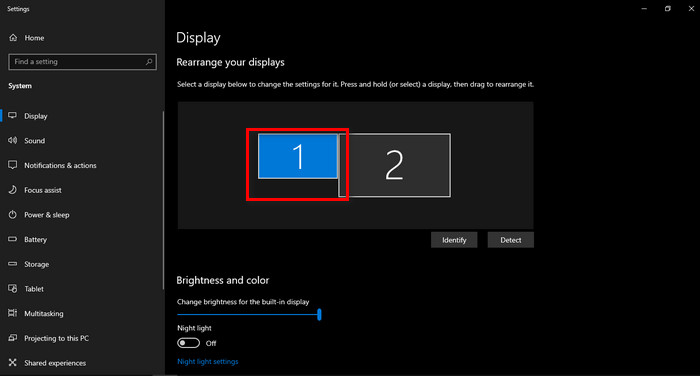
- Select the correct screen resolution.
- Pick the second computer from the Rearrange your displays & select the resolution if needed.
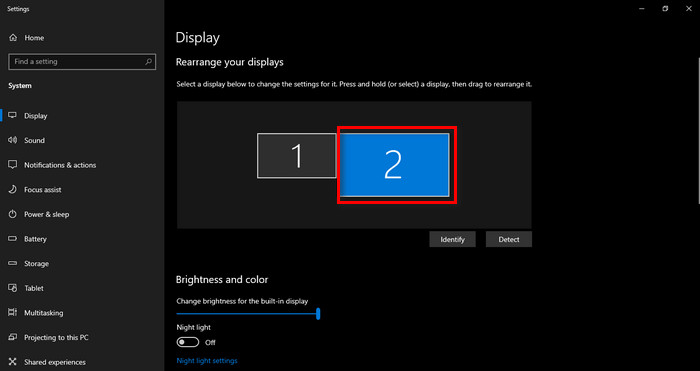
- Scroll down & Keep Extend these displays to expand the screen space.
- Choose to Duplicate these displays to mirror the main screen to the second monitor.
- Hit on Keep changes to complete your dual monitor setup.
You may see a black screen & then the settings will apply. But except this, if your monitor randomly loses signals it’s not good, but it’s fixable.
Laptop
Most laptops have HDMI & VGA ports available. So, like the desktop, you can easily connect the cables & use a second monitor with the laptop.
However, if the laptop lacks an HDMI port, you can still use a dual monitor. Your laptop screen will work as the main display & you can attach another monitor with the extra provided video port that comes with your laptop.
After attaching the second monitor, configuring the display settings is pretty much similar to the desktop mentioned above. Not only that, you can connect your PS5 to the laptop too, using this simple technique.
However, if you are a MacBook or iMac user, it is also possible to hook up a dual monitor with an HDMI cable.
What Are The Limitations & Drawbacks of Using Two Monitors?
While using more than one monitor is beneficial, the first problem you may encounter is monitor port mismatch with the graphics card. But, as it can resolve with an adapter, another limitation can stumble.
That being said, your GPU needs to be powerful enough to deliver the total resolution for your two monitors. So how can you know your GPU can be the limitation for dual monitors?
An easy example can drain out the confusion. Suppose your Esonic 17” monitor has 1280×1024 resolution. If you wish to use 6 of these 17” monitors in a 3×2 order, the total pixel will be (1280 x 3) x (1024 x 2) which results in a total 3840×2048 resolution.
An RTX 3060 Ti has 7680×4320 max digital resolution.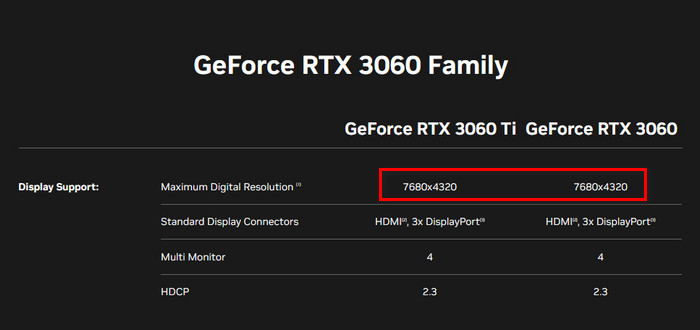
So if you connect those monitors with this GPU, all monitors will function properly. Otherwise, it is required to lower the resolution. But lowering the resolution than native is not a pleasant experience, like 1080p on a native 1440p display may look awful.
Besides this, a dual monitor setup can affect some performance. When two monitors are connected with a video card & in mirror mode, the performance loss is minor. But in extended mode, it can ramp up CPU usage & hit performance.
The reason is, when you start gaming on dual monitors, your system will need to produce double frame rates. Whether your primary monitor can get enough FPS, your secondary monitor can attain only half FPS, which is inconvenient.
If your GPU is not a powerful one, it will fail to generate more pixels & the processor performance will also get hit. This results in overall lag. But you can reduce lag for the dual monitor setup on Windows with quick & straightforward methods.
How to Get a Better Experience With a Dual-Monitor
As it’s pretty straightforward to set up a dual display, this will give a pleasant experience. To polish the adventure, you can follow some suggestions.
Here are some suggestions to get the most out of your dual monitor rig:
- Arrange Display: Windows sometimes can’t decide which side to put the new display on. In the display settings, you can adjust the border & rearrange your display settings for better interaction.
- Set Resolution: Both monitors can be different-sized or have mismatched resolutions. From the screen resolution settings, make sure you pick the native resolution & refresh rate for each monitor. Otherwise, the picture can get blurry.
- Adjust Orientation: For streamers, or coders, it is often required a portrait orientation for a better interface. So, if your monitor supports portrait orientation, you can easily do that for a better experience. Otherwise, you will require a monitor arm to get the advantage.
- Utilize Taskbar: For a secondary monitor, there will be enough space in the taskbar. So don’t forget to utilize the taskbar.
- Experiment With More: Finally, as you start to enjoy the dual monitor, there’s more. If your GPU can handle more displays, you can add more displays according to your need & explore more.
The display settings should automatically save in Windows 10 & 11 to give good performance.
FAQs
Will an HDMI splitter work for dual monitors?
An HDMI splitter is used to mirror the image of the main computer. It is only capable of duplicating the same display on both screens. So if you want to duplicate the screen, then the HDMI splitter will work. But it is not possible to extend the screen with the splitter. Instead, you will need an HDMI adapter.
How to Close a Laptop and Still Use Your External Monitor?
Search Power & sleep settings on the Windows search menu. Click on it & then hit on Additional power settings. Click on Choose what closing the lid does & select Do nothing from the drop-down for the When I close the lid section.
What equipment is needed for dual monitors?
Two monitors, a PC, and two proper cables are all you require for a dual monitor setup. You can use a monitor arm, which is optional but useful.
Final Thought
Double monitors can help in productivity & overall performance. Streaming, and coding, is also getting more comfortable with the advantage of dual monitors.
All you require is to find out the proper ports & cables, plug in the cables & configure some Windows settings for a better experience.
In this article, I described about the dual monitor’s usability. Don’t forget to come back & give feedback on how your dual monitor rig is going.



